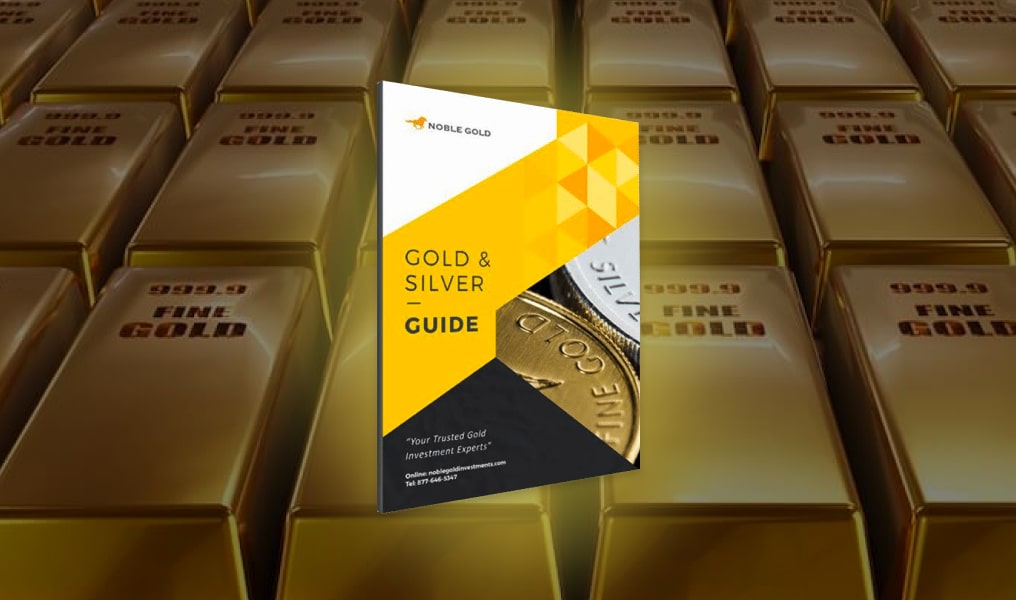The term “Fiat Currency” has been thrown around a lot in the media and popular culture in the past several years, but many people still don’t quite understand what it means.
In simplest terms, a “fiat currency” is one that has been designated as legal tender by a government. It is not backed by any physical commodity but instead relies on the faith and credit of the government that issues it. The U.S. Dollar is an example of a fiat currency.
In this article, we will discuss the history of fiat currency and its role in our economy today. We will also explore some of the pros and cons of using fiat currency and some alternatives.
What is Fiat Currency?
To expand on the definition above a little bit, fiat currency, or fiat money, is money that’s not backed by any sort of physical asset, i.e., gold, silver, or platinum. Instead, the money is essentially backed by the reputation, resources, and economy of the country that issues it.
Currently, every national currency in existence today is considered fiat money; however, there can be subtle differences between fiat economies. For example, in the United States, The Federal Reserve and The Treasury Department are departments of the country that they issue money for. Whereas the European Central Bank, which issues Euros, has a more separate relationship with the various countries that use the currency.
Fiat currencies give central banks greater control over the economy by allowing them to print as much or as little new currency as is necessary. Some people consider this power a potential threat, though, because if a central bank were to produce too much currency, it could create hyperinflation.
The History of Fiat Currency
The first known use of fiat currency was in China around 1000 AD. The Chinese government began printing paper money to be used as a medium of exchange for goods and services. The government found that it was much easier to print paper money than to mine for gold and silver.
As a result, fiat currency became more widely used throughout China. Eventually, other countries began adopting the use of fiat currency as well.
The first actual use of the term “fiat” in reference to currency was in 1666 by Sir Thomas Gresham. Gresham was an English financier who observed that some forms of money were more accepted than others.
He used the term “fiat money” to describe paper money not backed by gold or silver. This type of paper money was often less accepted than coins because it was not as valuable. Before this, people used commodities such as gold and silver, assets such as cows or land, and bartering as a means for payment.
The United States began using paper money in 1861 when the government began to issue currency to pay for goods and services during the Civil War. Before this, the US had used gold and silver coins as currency.
However, while the US currency was paper money, it was not technically a “fiat currency” yet, as the gold standard still backed it. It wasn’t until June 1933 that Congress enacted a joint resolution that officially ended creditors’ right to demand gold payment, effectively ending the gold standard.
The Pros and Cons of Fiat Currency
Fiat currency has always been a hot topic of discussion when it comes to economics. Still, it has become especially visible in recent years due to people like Ron Paul bringing attention to The Federal Reserve. Both proponents and opponents of fiat money have strong pros and cons to make their points; here are a few of the main ones.
Some of the benefits of using fiat currency include:
- It gives more flexibility to the government to issue money when necessary
- It is easier to use than commodities such as gold and silver in transactions.
- It can be easily divided into smaller denominations, making day-to-day transactions more convenient.
Some of the drawbacks of using fiat currency include:
- It is not backed by a physical commodity, so there’s no limit to the amount that can be printed.
- The value of fiat currency is dependent on the faith and credit of the government that issues it.
- If a government becomes unstable, the value of its currency may also decline.
- If too much currency is printed, it can lead to hyperinflation.
How Does Fiat Currency Lose Value?
One of the main reasons why fiat currency can lose its value is due to rash government spending. When a government spends more money than it takes in, it has to print more money which can lead to inflation.
Inflation is when prices for goods and services start to increase because too much money is chasing too few goods. This can cause the value of fiat currency to decline as people lose faith in the government’s ability to manage its finances.
Examples of Fiat Currency Going Wrong
While the global monetary system could be considered an example of fiat currency “going right,” you could also say it’s “going right, so far.” Historically, there have been a few occasions where fiat currency led to disastrous results.
Germany 1922 – 1923
One of the most notorious instances of a fiat currency failing was Germany in 1922-1923. Due to various issues leading to economic unrest, the government started printing mass amounts of unbacked currency to pay workers and international debts.
In 1922, the largest denomination of German currency was a 50,000 mark note. Due to too much money being printed causing hyperinflation, the largest denomination was now a $100 trillion mark note just one year later. This represented an inflation rate of roughly 325,000,000%.
The collapse of the German economy due to this hyperinflation and the following unrest were two of the most significant contributing factors to the start of World War 2 and Adolph Hitler’s rise to power.
Chile 1971-1981
In 1971 socialist candidate Salvador Allende was elected the President of Chile. One of his first acts as the new leader of Chile was to nationalize the country’s leading industries. Due to a perfect storm of bureaucracy and corruption, the national industries quickly began experiencing management and cash flow issues, and as a result, the government started hemorrhaging money.
To try and fight the losses, the Chilean government began to print unbacked currency with no regard for inflation, and by the end of 1973, the inflation rate had reached 1200%. Later that year, Augusto Pinochet seized control of the country and, shortly after, switched the country to the New Peso.
While Pinochet’s regime is not looked back on positively in any regard, Chile’s economy did recover and has stayed generally stable for the better part of 40 years.
Belarus 1994-2002
After the fall of the Soviet Union, many of the new Eastern Bloc states began to experience the pains of moving to a market-based economy. Despite Belarus being a highly-developed nation with one of the highest standards of living among Eastern European countries, they were still no match for the hyperinflation caused by fiat currency.
Like in Chile in 1971, Belarus’ leader, Lukashenko, nationalized its industries, quickly leading to a wave of corruption and inefficiency, tanking the economy. In 1993, the largest denomination was the 5,000 Ruble note, and by the end of the ‘90s, this had increased to a 5,000,000 Ruble note. Today more than 80% of the nation’s industries are still nationalized.
Are There Alternatives to Fiat Currency?
While you won’t be able to find a national currency that is not considered “fiat money” these days, there are still viable alternatives to fiat currency. Currently, the most popular alternatives are cryptocurrency, gold, silver, and other precious metals.
Cryptocurrency
At this point, just about everyone has heard of cryptocurrencies like Bitcoin and Ethereum, as well as the blockchain.
Cryptocurrencies are decentralized, which means they are not subject to government or financial institution control. Cryptocurrency is powered by the blockchain, a decentralized, distributed, and public ledger that ensures the security of a cryptocurrency.
While cryptocurrencies are not backed by a physical commodity like gold or silver, they also just can’t be “printed from thin air” like the US Dollar. Instead, cryptocurrencies must be “mined,” just like a precious metal. Also, like precious metals, there is a fixed supply of a given cryptocurrency, meaning it cannot be artificially inflated.
It is also fast, cheap, and easy to conduct transactions with cryptocurrency – especially internationally. Transactions can be completed in a matter of minutes and often only cost a few cents. This is a stark contrast to fiat currency which can take days to settle and be very expensive to send internationally.
Precious Metals
Precious metals like gold and silver have been used for centuries as a currency and store of value. The first known use of gold as currency dates back to 600 BC. Since then, gold has been used as a form of currency, store of value, and investment worldwide.
Unlike fiat currency, precious metals are tangible assets with intrinsic value, which means they are valuable in and of themselves. Not only can they be used to create assets like jewelry, but they can also be used for industrial uses like energy production. For example, silver is essential in producing both solar panels and electric vehicles.
The price of gold is determined by factors such as supply and demand, commercial usage, industrial uses, and central bank reserves. Gold is a safe haven asset which means it tends to increase in value when the stock market is volatile. This makes gold a good investment for times of economic uncertainty.
Investing in precious metals is a great way to diversify your portfolio and protect your wealth from inflation. In addition to the traditional precious metals like gold and silver, several alternative metals like platinum and palladium make for excellent alternatives to fiat money.
Like cryptocurrency, precious metals are also borderless, which means they can be traded and stored anywhere in the world. Whether in Bangkok or Boise, you know that the price of an ounce of gold will be the same.
Hedge Against Hyperinflation With Precious Metals
While fiat money may dominate the current global monetary system, that does not mean it’s perfect or impervious to failure. As we’ve seen time and time again, when a commodity does not back a currency, there is always the potential for hyperinflation to creep in.
If you’re interested in building a diversified portfolio that also hedges against inflation, you should consider investing in a gold and silver IRA. At SpaceXgold, we offer a wide range of opportunities to invest in physical gold, silver, palladium, platinum, and even rare coins.
Best of all, when you invest with us, you can roll your investments into a Gold IRA or Silver IRA, meaning your investments are stored in a tax-advantaged retirement account that will help to protect your financial future. Ready to get started? You can click here to sign up now or click here to speak to a member of our support team.






